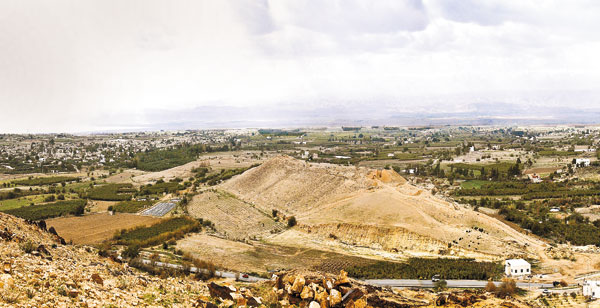Image Details

Michael C. Luddeni
A FITTING SITE FOR SODOM. Eight years ago, Steven Collins began directing excavations at Tall el-Hammam, an extensive site with an elongated upper mound (above) and an even larger lower city located in modern Jordan at the eastern edge of the Biblical kikkar. First inhabited during the Chalcolithic period (4600–3600 B.C.E.), the site attained its maximum size (100 acres, with 62 acres enclosed by the city walls) during the Middle Bronze Age (c. 2000–1600 B.C.E.), making it one of the largest cities in Canaan. But unlike other major Canaanite cities that continued to flourish in the subsequent Late Bronze Age, Tall el-Hammam as well as all other excavated sites of the kikkar were destroyed by fire at the end of the Middle Bronze Age and remained uninhabited for some seven centuries. Did this catastrophic destruction give rise to the Biblical tale of Sodom?
